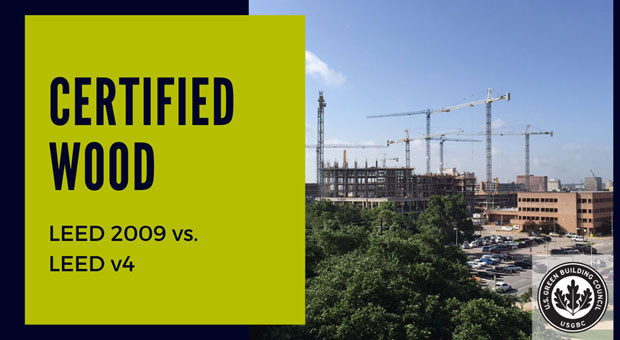We have all heard the idea of “going green” and “sustainability”. It’s in the news headlines, it’s on the products we buy, it’s in our everyday activities, and it’s clearly not going away. LaForce is always trying to evolve with the constant changes and expectations…and there are big changes in the Leadership in Energy and Environmental Design (LEED) program.
There are currently two versions of the LEED program being used by building owners: LEED 2009 and LEED v4. The certification levels and points are the same for both versions of LEED. Points are earned by processes used and product selections from the design phase of a building to occupancy to reporting after completion and use.
Certified = 40 to 49 points
Silver = 50 to 59 points
Gold = 60 to 79 points
Platinum = 80 to 110 points
However, there are differences between the two ratings systems. Below, we focus on which sustainable criteria wood doors relate to within the LEED rating system, the credits associated with the criteria, and the differences between the credits in the LEED rating systems. LaForce has developed a series of blogs on this, with our next set of credits to observe being certified wood.
Certified Wood
Within LEED 2009, a project can receive one point when 50% of the cost of all wood-based products within the project are certified. This falls under credit MR 7: Certified Wood. The documentation for this includes a chain-of-custody certificate from the vendor and invoices that include specific percentages. This is to ensure that the wood is indeed certified. The new wood percentage is needed for the calculation which is obtained from the vendor. Furthermore, this cannot “double-dip” with the MR 4: Recycled Content, which was discussed in our previous blog.
However, in LEED v4, projects will receive one point where products meet at least one of the criteria for at least 25% of the total cost of all materials in the project. Under the credit called Building Product Disclosure and Optimization – Sourcing of Raw Materials, Option 2 is a list of criteria to pick from. Certified wood happens to be one of the criteria found under the heading Wood Products. Again, the documentation must include a chain-of-custody certificate from the vendor and invoices indicating the specific percentages. Unlike LEED 2009, the new wood percentage is not part of the calculation. Finally, like LEED 2009, you cannot double-dip with the recycled content credit (the LEED v4 Reference Guide explains this well indicating “project teams must choose whether to classify the product [or some fraction of the assembly] as certified or as recycled content; the material cannot contribute to both claims simultaneously”).
Contact LaForce for more information on how we can help your building go green!
Thank you to Laura Waterman, Manager of Administrative Support and LEED Certified, for providing her expertise for this blog.



Follow Us